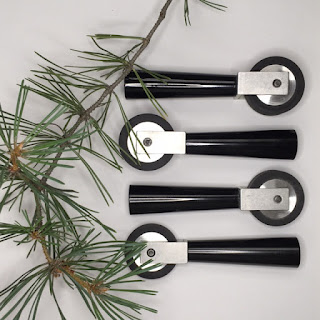It's taken a while to decide what to include here. I love learning about the inks and papers various printmakers use, what their process involves, and glimpses into their art lives and their studios. That's what I'm tucking in here.
First, this isn't Red Gate Studio. It's our old two-story barn, built back in the late 1890s according to the local historical society. Still, fixed up, wouldn't it make a terrific studio?
I can't complain, though. Slowly, I've taken over almost three-quarters of the lower level of the squared timber house we built a good forty years ago. If I'd known back then that I was heading towards an art life, I'd have claimed the front space (our current family room) with the three floor-to-ceiling windows looking over our forest. Instead, I have the larger back area with a big work island and lots of counter space, a sink and tons of storage. And good overhead lighting, all courtesy of my ever-accomodating husband (EAH). Yet somehow work migrates into the family room on a regular basis.
I'm a big fan of Akua brand inks. Developed by New York artists Susan Rostow and William Jung, they have a low odor (a plus for me) and clean up with soap and water. And they dry by absorption rather than evaporation which means until the ink hits a porous surface like paper it remains open and workable. You have endless time to work on a print - even the option to leave ink out on a palette overnight. (Unless you have cats - then you might want to cover things with a basket!)
Akua (now owned by Speedball) makes both a thick intaglio ink and a fluid version which can be blended for endless colour variations. They also make a number of modifiers such as transparent base and a release agent.
For paper I tend to stick with Legion Stonehenge which I can easily buy where I live. I also use both printmaking and mixed media Strathmore blanks although I often cut the 5x7-inch size down to 5x5-inch notecards. I also cut my own card blanks from 120 lb. cover stock - but it does take a bit of wrangling to get a smooth fold.
I don't do a lot of linoleum carving anymore (hands have started to grumble) but, like most newbie carvers, I started out with the trusty Speedball red-handled lino cutter. Then I graduated to the Flexcut Micro Palm Set and an inexpensive but well-made Japanese Power Grip set. I did buy a single Pfeil fine v-gouge, which is lovely, lovely to work with.
Since I work small, I mostly use Speedball soft rubber brayers. For even tinier work, a set of Takach Press mini-brayers is handy. They range from 1/4-inch to an inch.
I also splurged on a Takach Press 4-inch brayer. Confession - it's so beautiful I'm intimidated and rarely use it.
When I need a larger brayer, I'm more comfortable with the Japanese-made pair below (not sure of the brand). They're wonderfully crafted, too, but with their smaller diameter, feel more user friendly.
When I first discovered printmaking I had an opportunity to work with an artist in her home studio and use her big press that, years before, she'd had a machinist build. For a long time, it wasn't easy to find new or second-hand presses here in western Canada. Now you can special order through art supply shops.
For five or six years I printed by hand, helped out with a tiny Speedball block printing press and then a pin press (almost sculptural in its machined beauty).
Then I moved up to a Jack Richardson etching press. For space considerations, I got the 13.5x26-inch size (although marketed as the small model, the company makes an even smaller tabletop version). The small model is perfectly adequate for me but, with hindsight, I would have chosen the medium model (about 20x36-inches) just to have more options.
If you're curious how I dry my prints, check out this blog post here.
Now for a few shots of the studio.
I pass through here all day long with gratitude to my EAH, whose skill and generosity created this beautiful space. Even when life gets hectic, I can usually manage ten or so minutes at a time in the studio throughout the day.



















